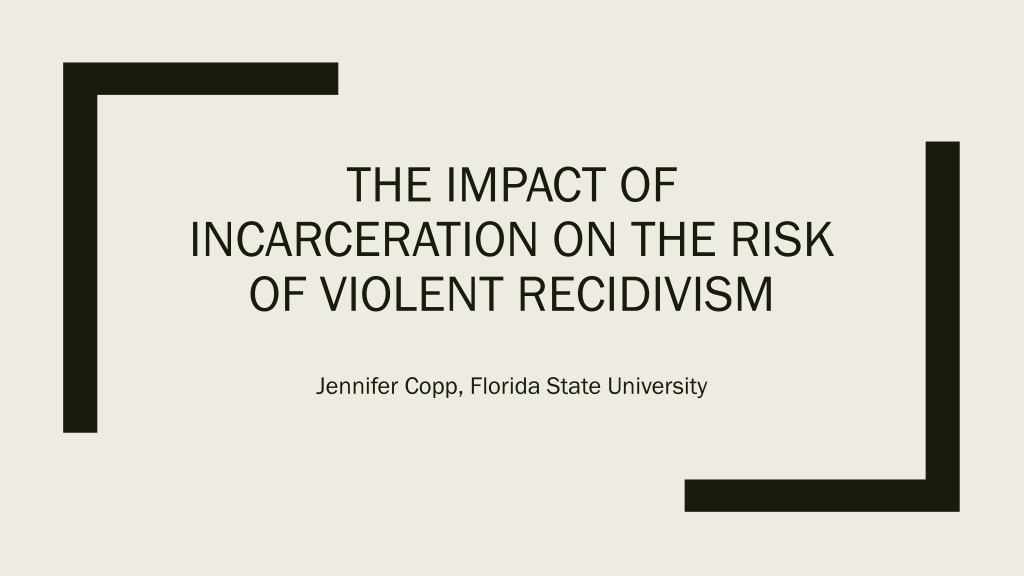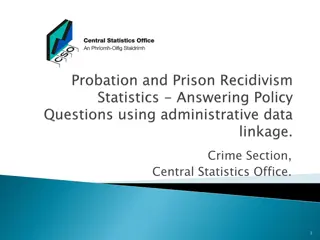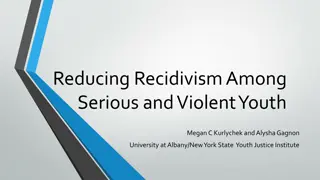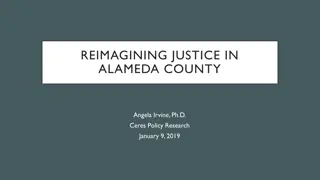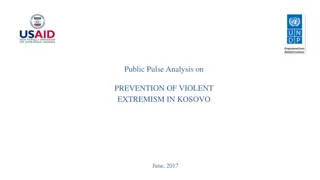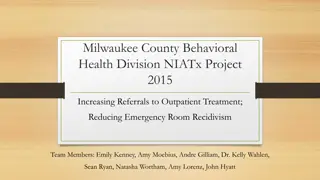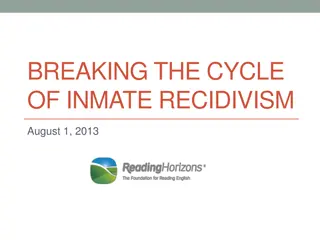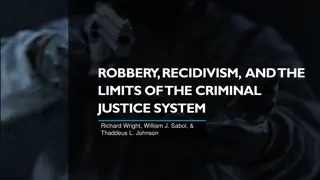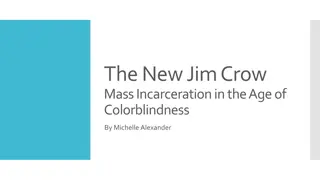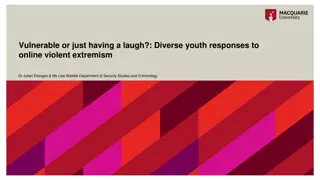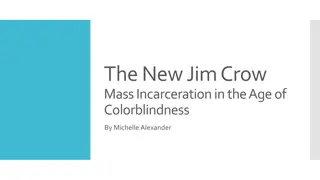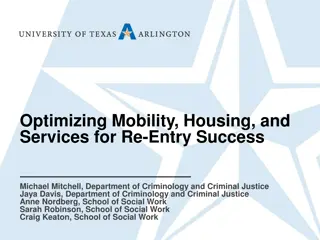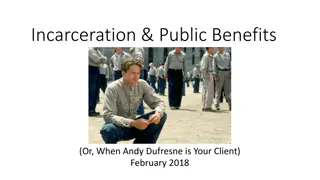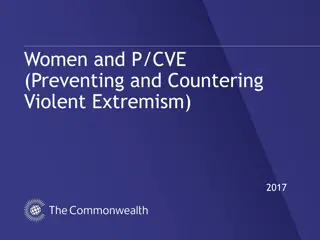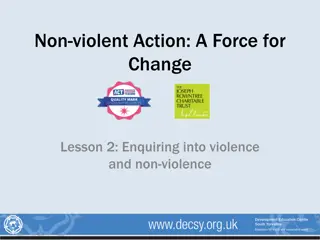The Impact of Incarceration on Violent Recidivism: A Comprehensive Analysis
Delve into the complex relationship between incarceration and violent recidivism, exploring theories, prior research findings, and the potential for heterogeneity in the effects of imprisonment on reoffending. Recognize the significance of understanding the impact of incarceration on reducing violent recidivism and the ongoing debates surrounding the effectiveness of custodial versus non-custodial sanctions in preventing future violent offenses.
Download Presentation

Please find below an Image/Link to download the presentation.
The content on the website is provided AS IS for your information and personal use only. It may not be sold, licensed, or shared on other websites without obtaining consent from the author. Download presentation by click this link. If you encounter any issues during the download, it is possible that the publisher has removed the file from their server.
E N D
Presentation Transcript
THE IMPACT OF INCARCERATION ON THE RISK OF VIOLENT RECIDIVISM Jennifer Copp, Florida State University
Introduction The primary goal of incarceration is crime prevention Incapacitation General deterrence Specific deterrence Focusing on the goal of specific deterrence: What is known about the effect of imprisonment on recidivism? What is known about the effect of imprisonment of violent recidivism?
Theorizing on the Incarceration Recidivism Link Incarceration reduces recidivism: Incarceration reduces recidivism: Imprisonment as a specific deterrent Rational choice approach to punishment: imprisonment increases the cost of offending Crime does not pay Incarceration increases recidivism: Incarceration increases recidivism: Imprisonment as a social experience Individuals are exposed to a broad range of criminogenic risk factors
Prior Research on the Impact of Incarceration According to BJS s Recidivism Study of State Prisoners Released in 2005: 68% rearrested within 3 years, 79% within 6 years, and 83% within 9 years Research on imprisonment and recidivism is limited, and varies considerably in methodological rigor Taken together, existing research supports the following conclusion: Prison is not more effective than non-custodial sanctions at reducing recidivism The effect of prison is either null or slightly criminogenic
Recognizing the Potential for Effect Heterogeneity What is the effect of imprisonment on recidivism? Is this really the right question? Recent work suggests that the effect of prison is likely heterogeneous What is the nature of the prison experience? Incarceration as compared to what? What is the population of interest? Along these lines, research has argued that the effects of imprisonment on recidivism may be positive, negative, or null
Incarceration and the Risk of Violent Recidivism Violence is central to current debates around reducing our reliance on incarceration Widespread support for use of non-custodial sanctions for non-violent offenses Yet nearly half of US prisoners are incarcerated for a violent offense Strategies to reduce prison population must address those convicted of non- violent and violent offenses Public fear, and not scientific evidence, behind lack of support for alternatives for violent offenders The best available scientific evidence suggests that imprisonment is no more effective than community alternatives at reducing violent recidivism
Conclusions Empirical evidence regarding the impact of imprisonment on recidivism should feature centrally in sentencing policy To date, prison policy has largely ignored research on imprisonment and reoffending Despite the policy relevance of the effect of imprisonment, we actually don t know as much as we need to know The best available evidence suggests that the effect of prison is null (or has a minor adverse effect) These findings hold for incarceration effects on violent recidivism
Implications for Theorizing and Future Research Well-designed studies assessing the impact of incarceration, including research accounting for potential effect heterogeneity Attention to mechanisms underlying the incarceration recidivism link Consider the utility of drawing distinctions What is a violent offender? Is this a meaningful category? Improve consistency of measurement
Policy Implications Draw on insights from the field The evidence suggests that there is no need to treat violent offenders differently from a recidivism standpoint Depoliticize the word violent Avoid being dismissive of community supervision
THANK YOU Jennifer Copp jcopp@fsu.edu
